By Patrick Mannion, contributing editor
CES 2018 heralds a breakout year for voice-based human-machine interfaces, and the Alexa-based Megablast speaker from Ultimate Ears will be on display to indicate just how far the technology has come. Combining high-end audio playback, Bluetooth, Wi-Fi, and an advanced acoustic processing front end — all in a waterproof chassis — the Megablast was just begging to be torn down. So we took the bait.
Amazon set the bar for digital audio playback systems with voice control with its Alexa-based Echo speaker. Since then, audio incumbents such as Bose and Sonos, as well as Google, Apple, and others, have followed suit, though incumbents are exercising their option to “play the field” a bit by incorporating voice assistants from either Apple, Google, or Amazon.
For discerning users, the bet is that, while the audio quality from any single compact speaker may not be able to achieve full audiophile soundstage quality, it will be plenty “good enough” when ease of use and portability are factored in. So for users, the three differentiating factors boil down to audio playback quality; the inherent quality and reliability of a device’s wireless connection; and a device’s ability to discern the voice-assistant activation trigger and associated commands. It must be able to perform the latter in the face of high-volume, cacophonous background noise.
Ultimate Ears, a division of Logitech, designed its Megablast to provide all three while also being waterproof and dustproof to IP67 (Fig. 1 ). It can be immersed for a full 30 minutes in 1 meter of water. For $299, it comes with Amazon Alexa built in, along with Wi-Fi and Bluetooth, and in five minutes, this user was up and running, streaming audio from Amazon Music. It comes with a free three-month trial. Any of Alexa’s skills can be used, as can most popular independent audio streaming services.
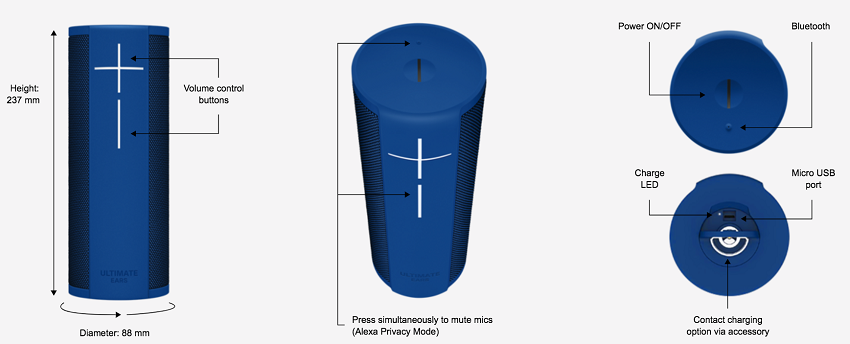
Fig. 1: Ultimate Ear’s Megablast uses Amazon’s Alexa to provide voice control of a high-quality audio playback system that also happens to be waterproof and dustproof to IP67. Image source: Ultimate Ears.
The Megablast measures 237 mm high and has a diameter of 88 mm. It emits through a full 360° with a maximum sound level of 93 dBc, has a frequency range of 60 Hz to 20 kHz, and uses two 25-mm tweeters, two 55-mm active drivers for the mid-range, and two 85 x 50-mm passive radiators for bass. It can operate for 16 hours on a single charge of its lithium-ion (Li-ion) battery, and it supports Bluetooth up to 150 ft. and 2.4-/5-GHz Wi-Fi up to 330 ft. The voice-recognition subsystem uses multiple microphones with beam-forming technology and noise cancellation.
Along with being waterproof, interesting twists include a D-ring that can serve as a hook to hang the speaker or which alternatively can be removed to attach the speaker to a tripod stand or to a standalone charging station (sold separately). Otherwise, charging requires folding back a flap that covers the USB charging port with a regular (supplied) USB cable and AC adapter.
Great user experience but odd visuals
The Megablast costs enough to expect it to be easy to connect with Bluetooth and Wi-Fi, and it is. What isn’t expected is the quality of the sound: It’s almost alarmingly good. The laws of physics dictate that the bass shouldn’t be that low in a small box, while the mid-range and highs were clear and present where expected. Don’t expect a well-defined sound stage and chest rattling bass, but do expect to be very pleasantly surprised with the quality of the audio and the ease of use.
The Megablast proved its ability to extract its keyword (Alexa) from a room full of chattering guests, and when testing for sensitivity, it could pick up a whisper from a distance of approximately 5 ft. Oddly, Ultimate Ears designed it such that there’s no clear indication that Alexa is either listening or has heard the user unless its placed below eye level. The Amazon Echo and Echo Dot have the familiar blue circle shimmering from the top rim; the Megablast has a small sliver of silver light emanating from the top surface, so it’s only visible when looking down upon it.
So how’d they do that?
Because it’s waterproof, going inside the Megablast required an educated guess as to its internal construction, followed by the careful use of a Dremel circular cutting tool. Removing the plastic caps on each end exposed four screws that, once removed, allowed the main end structures to be lifted and expose the insides.
The colored fabric covering the chassis could also be removed, exposing three microelectromechanical systems (MEMS) microphones (mics) placed evenly around the top of the Megablast (Fig. 2 ).
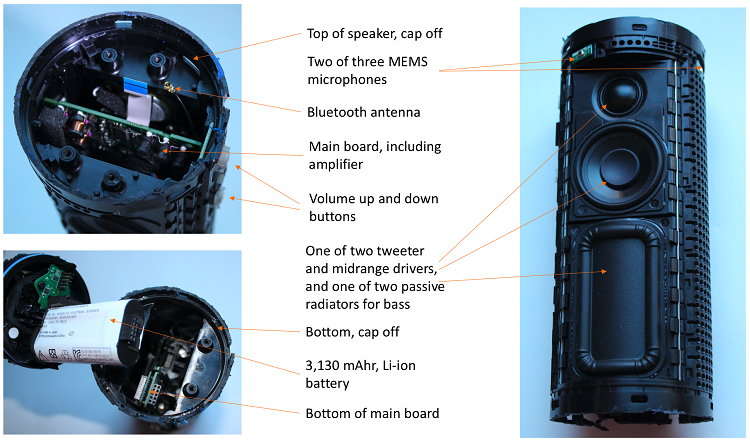
Fig. 2: Taking the end caps off required a circular saw, but once inside, undoing some screws exposed the main board (upper left) and battery cavity (lower left). Wire rimmed the chassis, keeping the speaker drivers in place.
The mics attached to the top board that came off once the screws were removed to show its two main top switches: power and mute (Alexa Privacy Mode). The top board also holds the Bluetooth radio’s vertically standing dipole antenna, with the antenna wire running back inside the chassis to the main board’s RF and audio processing module (Fig. 3 ).
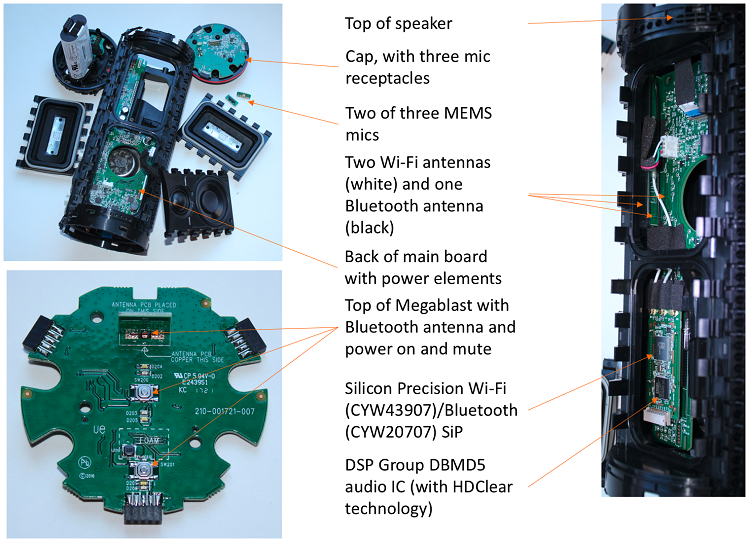
Fig. 3: Three MEMS microphones pick up the sound, but the DSP Group DBMD5 audio SoC makes sense of it, while SPIL’s Wi-Fi/Bluetooth RF IC ensures continuous streaming.
Removing the bottom end module also removed the battery, a custom design out of Japan and China and which is rated at 7.2 V and 3,130 mAhr, or 22.5 Whr (Fig. 2 ). Once the battery was removed, the cavity for the passive radiators was exposed, as was the bottom end of the main board, with a small module attached.
Innocuous module forms heart of Megablast
It turns out that this module, attached to the main board, contained the secrets to two key aspects of the Megablast’s design: seamless and reliable wireless connectivity for continuous streaming and accurate voice-recognition capability.
The wireless communications come courtesy of the SB-WBM-N07P from Silicon Precision Industries Co., Ltd. (SPIL). This is a system-in-package that comprises two radios, both from Cypress Semiconductor. The CYW43907 is an IEEE 802.11a/b/g/n system-on-chip (SoC) with an on-board Arm Cortex applications processor. It supports rates of up to 150 Mbits/s and covers the 2.45- and 5-GHz Wi-Fi bands. It’s worth noting that, while 150 Mbits/s isn’t the maximum Wi-Fi range now available, audio doesn’t require high throughput, so reliability and range are more important factors.
The second radio on SPIL’s SB-WBM-N07P is the CYW40707 Bluetooth baseband SoC with integrated transceiver. It supports Bluetooth Low Energy and, like the CYW43907, it was originally from Broadcom before Cypress bought that company’s wireless unit.
Three antenna wires run from the module: A black one for Bluetooth runs right to the top of the Megablast, while the other two are for Wi-Fi and run up on opposite sides of the system — one getting its own dedicated board, the other sharing a board with the Megablast’s volume buttons (Fig. 3 ).
The heart of Megablast’s voice-recognition capability resides in the other chip on the module: the DBMD5 audio SoC from DSP Group. The DBMD5 was announced at CES 2017. The chip was designed with the company’s HDClear technology for voice-based control in high-noise environments and includes control over voice triggers and barge-in capabilities.
As the front end to Alexa, the audio and speech processor is critical, and the DBMD5 comes with DSP Group’s support for sophisticated voice-enhancement algorithms, including echo cancellation, noise suppression, beam forming, and far-field support. Other features include voice buffering for smooth operation with automatic speech recognition (ASR) applications. An on-board, dual-core DSP supports both digital and analog microphones.
The RF communications and audio ICs are supported on the underside of the module by the MX25L25645G 256-Mbit serial NOR flash chip from Macronix International.
Megablast’s high structural and acoustic integrity
Digging deeper into the Megablast required the removal of two wire strands that held the speaker drivers and radiators intact. This allowed their removal, exposing the communications and audio processing module further, as well as the interesting design of the mid-range drivers. They were glued together through a hole in the main board with a foam separator.
This ensured structural integrity even further, adding to the tight, compact, solid, well-designed chassis and internal construction. The chassis itself is one piece of plastic with no seams. For audiophiles aware of the importance of structural integrity, this is noteworthy because it minimizes chassis vibration and its resulting “coloring” of the audio. It also provides a solid foundation for the bass radiators: Structural design for waterproofing and high-end audio do have mutually beneficial requirements.
The audio electronics are contained on the main board and are driven by three main chips: two NXP 1334B low-power audio digital-to-analog converters (DACs) and one Texas Instruments TPA3131 7-W Class-D stereo amplifier (Fig. 4 ).
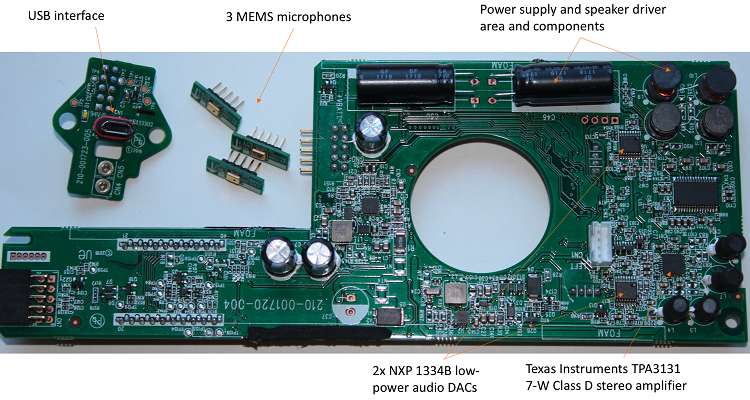
Fig. 4: The main audio processing and amplification stages are driven by two NXP low-power DACs and a single Texas Instruments Class D stereo amplifier.
The 1334B DAC is designed for portable audio applications. It requires no analog post filtering, includes a digital filter, and performs digital pre-emphasis for 44.1-kHz sampling rate. An interesting feature is its use of noise shaping. This shifts in-band quantization noise to frequencies well above the audio band to help improve the signal-to-noise ratio (SNR). With this, it can get to 100 dB when operating off of a 3-V supply.
The TPA3131 drives speakers with up to 2 x 42 W (peak) at 4 Ω. It doesn’t require a heatsink, but instead, it dissipates heat through the bottom side to the PC board using a PowerPAD.
Enough to make grandma waltz
All told, the Megablast fulfills its promise of excellent portable audio and ease of use. It has some quirks in design as mentioned, but it passed the grandma test with flying colors. When she asked if this was “another of your gadgets,” I had to reply that it was. I explained what it did and she grabbed her walker and shuffled off disapprovingly: “Yeah, yeah, yeah, but I bet it can’t play ‘The Blue Danube’?” I suggested that she ask. She did and was shocked to hear it play in seconds. She smiled, surprised, and waltzed hummingly to the warming car. Over the holidays, she asked if I would get her one. I will! In the meantime, here’s a family photo (Fig. 5 ).
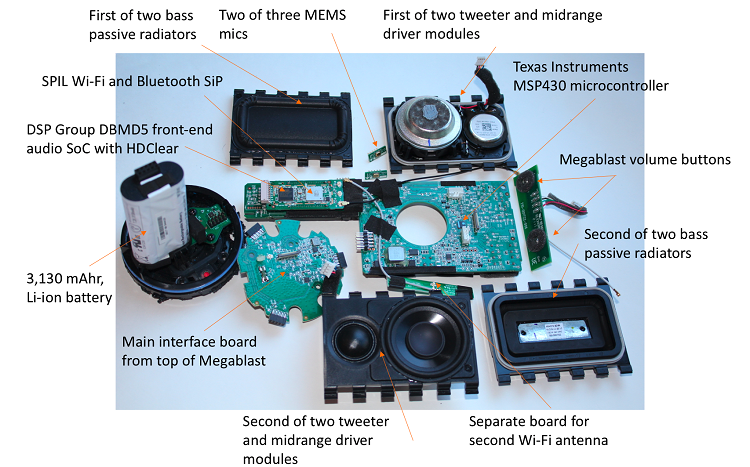
Fig. 5: “Family photo” of Megablast’s main components.
Advertisement
Learn more about Electronic Products Magazine





